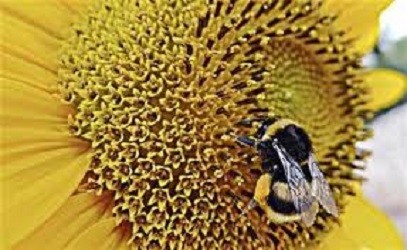
University of Guelph researchers have recently come up with new studies about training Bumblebees to solve problems by rewarding them with food for an exchange.
Two separate studies were conducted; first study tested the problem solving abilities of bumblebees and was published in the Animal Cognition journal, while the second study published in the Psyche journal, tested the bee's social learning capabilities.
For the first test, Hamida Mirwan, a Ph.D student and Peter Kevan, professor in Guelph's School of Environmental Sciences allowed the bees to sit on series of artificial flowers. The flowers were sprayed with a sweet reward that they could obtain only by finding out a way to get the treat. Challenges increased as the difficulty level of the puzzle progressed.
Researchers found that inexperienced bee was unable to solve if presented a complicated puzzle in order to get the reward. But when the bees were given puzzles in the order of easiest to the most complicated, they were capable of solving it.
"Bees with experience are able to solve new problems that they encounter, while bees with no experience just give up," said Mirwan.
The second study examined bee's ability to learn by observing and communicating with other bees.
Researchers used artificial flower that contained sweet syrup that could be accessed by walking underside a machine. For several days bees were allowed to feed on the sweet reward and then inexperienced bees were place and allowed to observe other bees. It took just over one minute for the inexperienced bees to get the reward.
"Social learning in animals usually involves one individual observing and imitating another, although other kinds of communication can also be involved. They could try for up to 30 minutes, but most gave up before then." Mirwan added.
The researchers believe that there is certainly a social learning that is taking place among the bees, but it is not clear as to what communication method is being used. It could be through touch, visual, smell or vibration.
"We can't quite explain how bees that had never even seen an artificial flower were able to become adept so quickly at foraging on them, but clearly some in-hive communication took place. It suggests that social learning in bumblebees is even more complex than we first expected." said professor Kevan.









